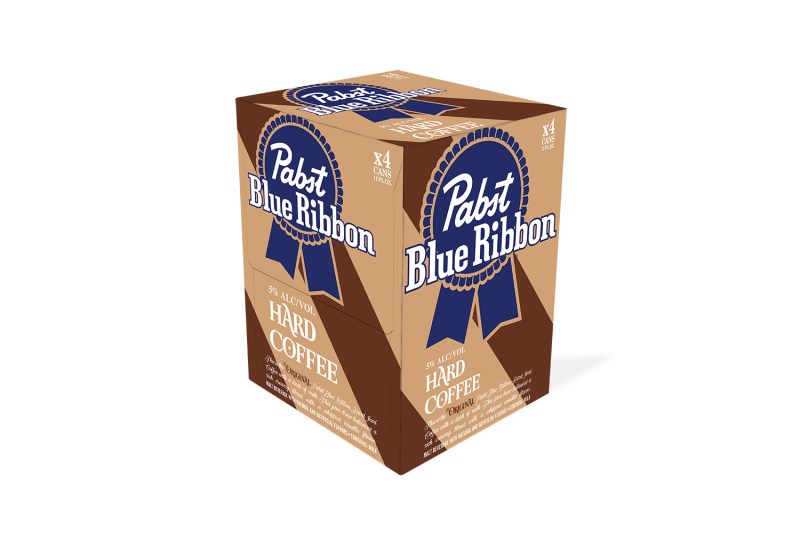As companies continue to push out boozy versions of different drinks, Pabst is releasing PBR Hard Coffee.
PBR Hard Coffee is made with both Arabica and Robusta coffee beans, as well as “creamy American milk.” The vanilla-infused iced coffee clocks in at 5% alcohol by volume. The can claims, “This java brew balances a rich creamy blend with a whipped vanilla flavor.” Folks who have tried it claim on Untappd that it has a “Yoo-hoo” or “Frappucino”-like flavor.
Pabst says it’s one of the first of its kind to market — and with its brand prowess and distribution, the drink could take off — but there are in fact other hard coffee brands out there, like Spiked Cold Brew.

“Pabst Blue Ribbon has always been a brand that pushes boundaries and celebrates those who experiment and try new things,” Pabst Blue Ribbon Brand Manager John Newhouse said in a release. “Hard Coffee is an opportunity for us to pioneer a delicious and fun new drink, and give America something unique. We hope everyone loves it as much as we do.”
Pabst certainly is active on the new product front. The brand recently launched Lucky Lager, an American classic brand. Pabst also has generated buzz with the launch of a whiskey this summer. The brand has also expanded with PBR Easy, PBR Extra, and PBR N/A.

There is no shortage of other flavored malt beverages out there evoking flavors of drinks that aren’t alcoholic, like the whole Not Your Father’s Root Beer craze of a few years ago. This summer has quickly turned into the Summer of Hard Seltzers. So it certainly makes sense some major brands are turning to the caffeine kick of coffee to fuel sales.
According to a brand representative, PBR Hard Coffee does contain caffeine. In the past, that has proved to be a problem for brands like Four Loko and Boston Beer co-founder Rhonda Kallman, who launched caffeinated beer brand Moonshot, which was ultimately shut down by the FDA. Kallman now owns Boston Harbor Distillery.
For now, PBR Hard Coffee is only selling in test markets. If all goes well and it stays clear of regulatory hurdles, it could be everywhere before long.


